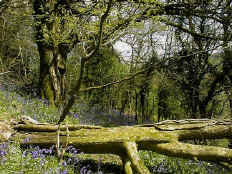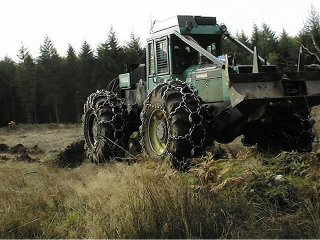FORESTRY
 |
Forestry is an important industry in Britain. It manages woodlands to a provide a sustainable supply of timber as well as places for wildlife and for people to enjoy. Typically forests are either made up of broadleaf or coniferous trees. However forests and woodlands are not just places full of trees. A great many other plant and animal species are associated with woodlands. This can be numbered in the hundreds or even thousands of different species depending on the age and type of woodland. The interactions of the species which colonise the different habitats which make up these ecosystems is very complex. |
At one time 90% of England was woodland. Today even with the extensive planting which has taken place, woodlands only cover about 10% of England. Much of the planting is with conifers because they can grow up to 5 times faster than a broadleaf such as Oak. Thus the maximum economic yield can be achieved in something like 60 years rather than in 300 years. This is an important consideration because there is an enormous market for timber and its products. |
|
 |
In Britain every man, woman and child uses one tonne of timber every year. Most of this is imported and it is not always certain that this timber is grown and managed in a way which is sustainable. The largest owner of woodlands in Britain is the Forestry Commission. It is responsible for protecting and expanding Britain's forests and woodlands, and increasing their value to society and the environment.
|
|
Forest Harvester in action (movie) |
Establishment
| Before planting trees on a commercial scale it is often necessary to cultivate the ground. Here a scarifier breaks up the ground where a previous crop has been harvested. It produces a ridge and furrow not dissimilar to ploughed ground. The young trees will be planted on the side of the ridge. If they are planted in the bottom of the furrow they may become waterlogged. Conversely if they are planted on the ridge they are prone to desiccation. Click on the picture to see and hear the scarifier in action. |
Lots of Woodland Information here!


